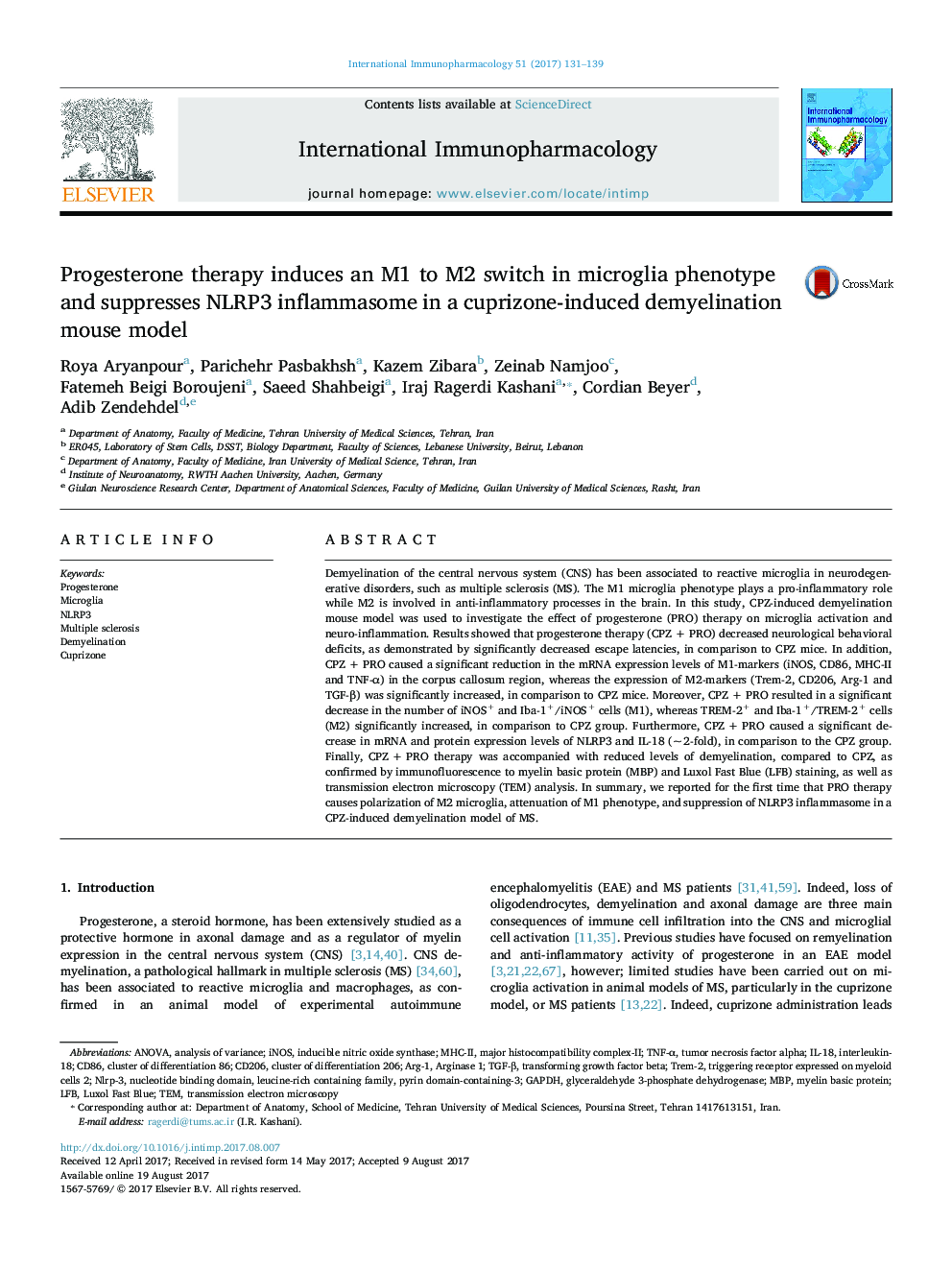| کد مقاله | کد نشریه | سال انتشار | مقاله انگلیسی | نسخه تمام متن |
|---|---|---|---|---|
| 5555225 | 1559739 | 2017 | 9 صفحه PDF | دانلود رایگان |

- Progesterone, a sex hormone, suppresses the M1- microglia phenotype markers (CD86, iNOS, TNF-α and MHC-II) in cuprizone demyelinated mice.
- Progesterone, increases the M2- microglia phenotype markers (CD206, Arg-1, TGF-β and Trem-2) in cuprizone demyelinated mice.
- Progesterone therapy downregulates either the gene or protein expression of NLRP3 inflammasome and its downstream product of IL-18.
- Progesterone therapy resulted in a significant decrease in the number of iNOSÂ + and Iba-1Â +/iNOSÂ + cells (M1-microglia), whereas TREM-2Â + and Iba-1Â +/TREM-2Â + cells (M2-microglia) significantly increased, in comparison to untreated mice.
- Progesterone therapy stimulates the remyelination.
Demyelination of the central nervous system (CNS) has been associated to reactive microglia in neurodegenerative disorders, such as multiple sclerosis (MS). The M1 microglia phenotype plays a pro-inflammatory role while M2 is involved in anti-inflammatory processes in the brain. In this study, CPZ-induced demyelination mouse model was used to investigate the effect of progesterone (PRO) therapy on microglia activation and neuro-inflammation. Results showed that progesterone therapy (CPZ + PRO) decreased neurological behavioral deficits, as demonstrated by significantly decreased escape latencies, in comparison to CPZ mice. In addition, CPZ + PRO caused a significant reduction in the mRNA expression levels of M1-markers (iNOS, CD86, MHC-II and TNF-α) in the corpus callosum region, whereas the expression of M2-markers (Trem-2, CD206, Arg-1 and TGF-β) was significantly increased, in comparison to CPZ mice. Moreover, CPZ + PRO resulted in a significant decrease in the number of iNOS+ and Iba-1+/iNOS+ cells (M1), whereas TREM-2+ and Iba-1+/TREM-2+ cells (M2) significantly increased, in comparison to CPZ group. Furthermore, CPZ + PRO caused a significant decrease in mRNA and protein expression levels of NLRP3 and IL-18 (~ 2-fold), in comparison to the CPZ group. Finally, CPZ + PRO therapy was accompanied with reduced levels of demyelination, compared to CPZ, as confirmed by immunofluorescence to myelin basic protein (MBP) and Luxol Fast Blue (LFB) staining, as well as transmission electron microscopy (TEM) analysis. In summary, we reported for the first time that PRO therapy causes polarization of M2 microglia, attenuation of M1 phenotype, and suppression of NLRP3 inflammasome in a CPZ-induced demyelination model of MS.
Journal: International Immunopharmacology - Volume 51, October 2017, Pages 131-139